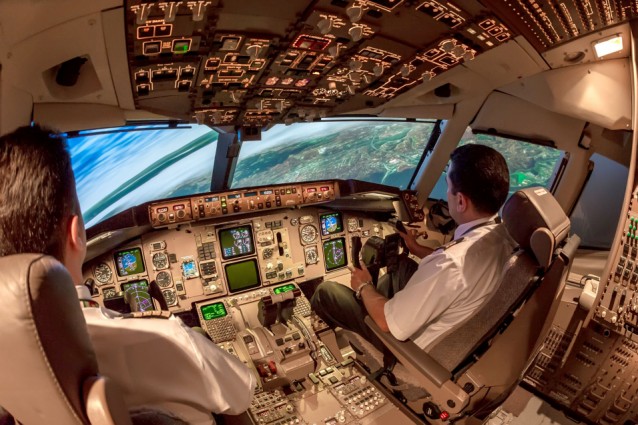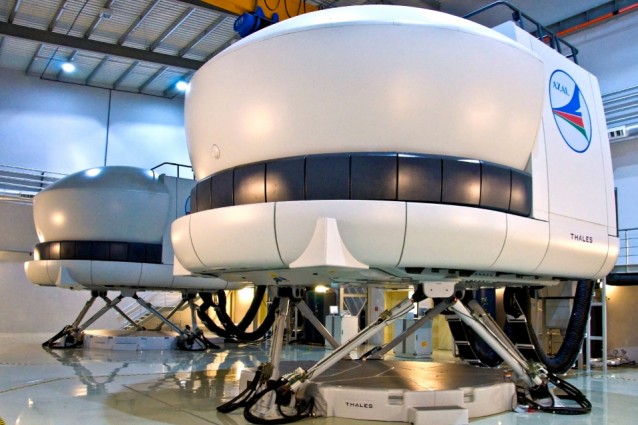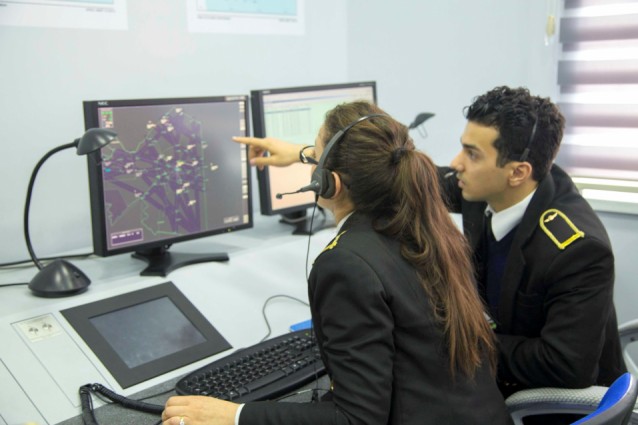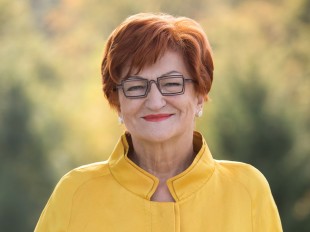Baku-born American aviator and writer Vusal Hasanov tours the National Aviation Academy of Azerbaijan, a state-of-the-art training complex that has helped to revolutionize the Azerbaijani air transport industry.
Having returned to Baku after a span of six years, during which I completed aviation training and worked for an aviation manufacturer in the United States, I was eager to visit the National Aviation Academy (NAA) of Azerbaijan. I knew that much progress has been made in expanding the scope of the academy and modernizing the training programmes; however, I had not realized the magnitude of the academy’s progress and development.
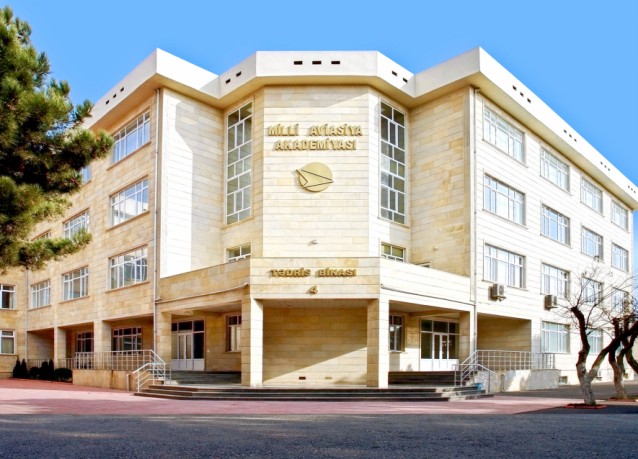 The Air Traffic Control (ATC) training centre at the National Aviation Academy (NAA). Photo: courtesy of the NAA
The Air Traffic Control (ATC) training centre at the National Aviation Academy (NAA). Photo: courtesy of the NAA
The academy, located across the Mardakan Highway from the Heydar Aliyev International Airport, covers an area of about 29 hectares. Tree-lined paths border an impressive array of modern facilities comprising the campus. When I arrived at the academy, I was warmly welcomed by two of its renowned experts, Dr Khaqani Abdullayev, the Scientific Secretary of the NAA, and Dr Adalat Samadov, who serves as vice rector for educational affairs. Both of the professors have been deeply engaged in enriching the educational potential of the academy and have had a significant role, in collaboration with others in the academy, in bringing the institution to its current state.
Aviation vacuum
During the years that Azerbaijan was part of the Soviet Union, Azerbaijani aviators studied primarily outside of Azerbaijan in different cities across the USSR, such as Kiev and St. Petersburg, to obtain their aviation training. This system was effective when the Soviet Union was still intact; however, upon the dissolution of the USSR in 1991, training aviation personnel abroad became inefficient and costly. Azerbaijan had only a small training facility used for offering refresher courses for existing pilots, and no plat-form existed to produce new pilots.
Azerbaijani aviation management faced two options. They could potentially continue the costly and inefficient training of its personnel in other countries, which offered an immediate solution to the vacuum created by the demise of the Soviet Union but failed to provide a strong local education base. Alternatively, the Azerbaijani government contemplated creating a national education facility to train and equip local specialists, which would address the long-term goals of Azerbaijani aviation by preparing a highly skilled workforce for the aviation industry.
The expense and effort necessary for such an endeavour was daunting; nevertheless, the Azerbaijani government opted Upon the dissolution of the USSR in 1991, training aviation personnel abroad became inefficient and costly. Azerbaijan had only a small training facility used for offering refresher courses for existing pilots, and no platform existed to produce new pilots to undertake the challenge. On June 25 of 1992, the Cabinet of Ministers of the Republic of Azerbaijan adopted resolution 337 to create a new training centre on the basis of the small training facility for Azerbaijani pilots. It was a brave step and proved crucial in the development of the Azerbaijani Republic, initiating a new era of aviation in the life of the newly found-ed republic. Because of the dedication of the Azerbaijani professionals who had the determination to see the vision to fruition, today Azerbaijan can be proud of its aviation potential, which is exemplified by the academy’s highly skilled workforce and high-tech industry.
State-of-the-art centre
Resolution 337 gave birth to the National Aviation Centre under the state agency Azerbaijan Airlines. This enabled the Azerbaijani government to use the training structure of the agency to educate and equip aviation professionals to meet the ever-increasing demands of the airline sector in Azerbaijan in the early years of independence.
Within two years, the Aviation Centre had progressed into a more so-phisticated organization, and in 1994 it was renamed the National Aviation Academy (NAA). Comprised of one department, the academy trained its first 80 students for two specialisms: piloting and aircraft maintenance. In the same year, the academy added three more departments: the Department of Air Transport Flight Operations, the Department of Aircraft Flight Operation and Air Navigation, and the Department of Design and Operation of Flight Equipment and Aviation Engines. Furthermore, the academy established the Scientific Research Aviation Institute to conduct research in aviation technologies.
The academy gained new momentum in 1996 with the appointment of honoured scientist and Doctor of Physical and Mathematical Sciences Arif Pashayev to the post of rector of the academy. Dr Pashayev devoted special attention to modernizing the infrastructure of the academy as well as to the development of the academic pool of the institution. His philosophy paid off and the academy grew quickly, rapidly expanding its academic capacity and adding several more specialisms to its catalogue. Initially, it had been comprised of two primary buildings; however, within a short period of time, the institution not only modernized and expanded its academic facilities but also developed con-temporary student housing facilities with capacity for over 200 students. The academy further constructed an expansive sports complex to promote a healthy and active lifestyle among students.
Cutting-edge facilities
The technological potential of the academy is significant. The facility features strategically designed classrooms kitted out with modern multimedia equipment and innovative technical aids to provide students with an up-to-date, real-word educational experience. The classroom for training air traffic controllers, or ATCs, is particularly advanced. The layout of the room closely resembles the Air Traffic Control Tower chamber, and the equipment realistically mirrors the ATC work area.
The ATC faculty has developed a fantastic simulator programme to help train ATCs, and Dr Huseyn Babayev, head of the Air Navigation Department, was kind enough to demonstrate the programme to me. The simulator allows students to practise dispatching and receiving an aircraft, guiding pilots to safe take-offs and landings. Using the programme, the faculty can simulate impromptu emergency situations, such as a bird strike on an aircraft engine, training students to safely guide pilots to safe landings even in the most unpredictable of events.
Additionally, ATC students engage in e-learning delivered by DFS Aviation Services GmbH, a provider of air navigation training that offers air traffic control solutions across Europe, drawing on six decades of experience in the field of air navigation. NAA students work through a variety of consecutive DFS learning modules, which allows them to study the material interactively and complete measured assessments.
Another impressive implementation of simulator technology at the academy is the simulator training room for pilots. The facility is equipped with full-motion simulators, which are each comprised of a complete cabin overlay featuring a complete suite of operational functions that can manipulate a three-dimensional plane, providing a realistic experience for pilots. The simulators represent air-craft such as the Boeing 757/767, Air-bus A-319/320, ATR 42/72, and Cessna 172S, as well as the Mi-171 helicopter. The simulators are used regularly by students of the academy and professional pilots currently employed in the Azerbaijani aviation industry, as well as aircrews of other international airline companies.
As a private pilot of single-engine aircraft, I couldn’t resist hoping that the academy would grant me the opportunity to test out the simulator. I was in luck. Mr Seymour Karimov, the head of the Practical Training Section at the Pilot Training Centre, sat me in an Airbus A-319/320 and handed over control of the simulator. In the United States, I fly small aircraft such as the Cirrus SR2X and Cessna 172. Navigating a simulated flight for a modern commercial plane, capable of holding 150 passengers, was an exciting experience.
Simulators are an essential training component for student and professional pilots, as they effectively prepare pilots for situations that are uncommon in the skies. Using the simulators, an instructor pilot can create adverse weather conditions to train pilots to navigate under heavy rain and snow, poor visibility, and even thunderstorms. During the training, an instructor can add an emergency situation, such as an engine failure, into the experience, arduously preparing pilots for even the most rare of circumstances. Most of the simulators at the academy are provided by Thales, a major simulator manufacturer that is certified annually by the European Aviation Safety Agency (EASA).
The academy also affords special attention to training aviation maintenance engineers. The training facilities have been carefully designed to ensure an immersive experience that adequately prepares the future maintenance engineers to successfully undertake roles in maintaining aircraft at international safety assurance levels. The maintenance training includes two major components: first, the students devote ample time to analysing the theories and structures of airplanes, and secondly, the students put their learning into action with hands-on training in a strategically designed environment that models real-world maintenance facility scenarios.
In addition to its technological training programmes, the academy also delivers general education courses, such as in advanced maths, engineering, history and law, and grants a bachelor’s degree to successful candidates upon completion of the programme. After finishing their under-graduate studies, students can continue their education into master’s and doctorate programmes at the academy.
Exciting future ahead
Beyond cutting-edge technological equipment and immersive simulator and facility experiences, perhaps the academy’s greatest asset is its highly qualified and experienced academic staff. Over four hundred staff members deliver an outstanding educational experience to the academy’s students, including three academicians, three members of the National Academy of Sciences of Azerbaijan, more than 50 staff members holding doctorates of science (DSc), and 100 DSc candidates.
Today, approximately 2,000 individuals receive cutting-edge technical education at the academy annually, including students and career professionals. Nearly all of the aviation personnel of Azerbaijan, including pilots, have been trained there prior to assuming their respective roles in the aviation industry. The academy continues to function under the umbrella of Azerbaijan Airlines, whose financial and moral support have been invaluable. Silk Way Airlines has contributed significantly to the progress of the academy as well.
From a tiny training facility in 1991 to a complex and expansive organization providing a state-of-the-art education in 2019, the accomplishments of the National Aviation Academy of Azerbaijan are impressive. The academy’s potential to continue its pursuit of developing the highest-quality modern training opportunities possible ensures an exciting and innovative future for the field of aviation in Azerbaijan.
About the author: Vusal Hasanov is a freelance writer and US aviator originally from Baku who recently spent four years with the Vision Jet programme at Cirrus Aircraft in Duluth, Minnesota (USA) as a crew chief and technical writer. He and his wife and their two sons divide their time between Baku and Minnesota.
